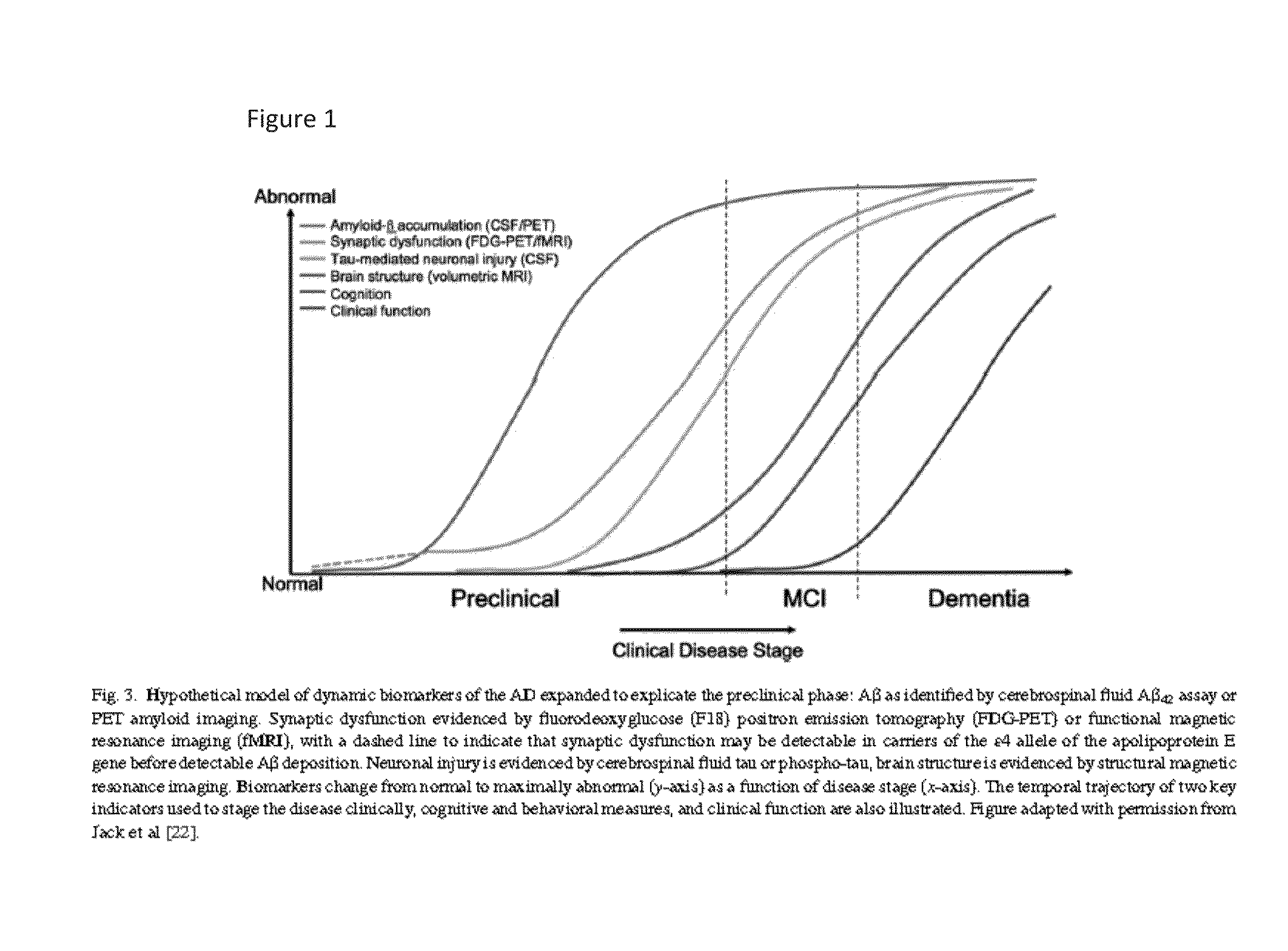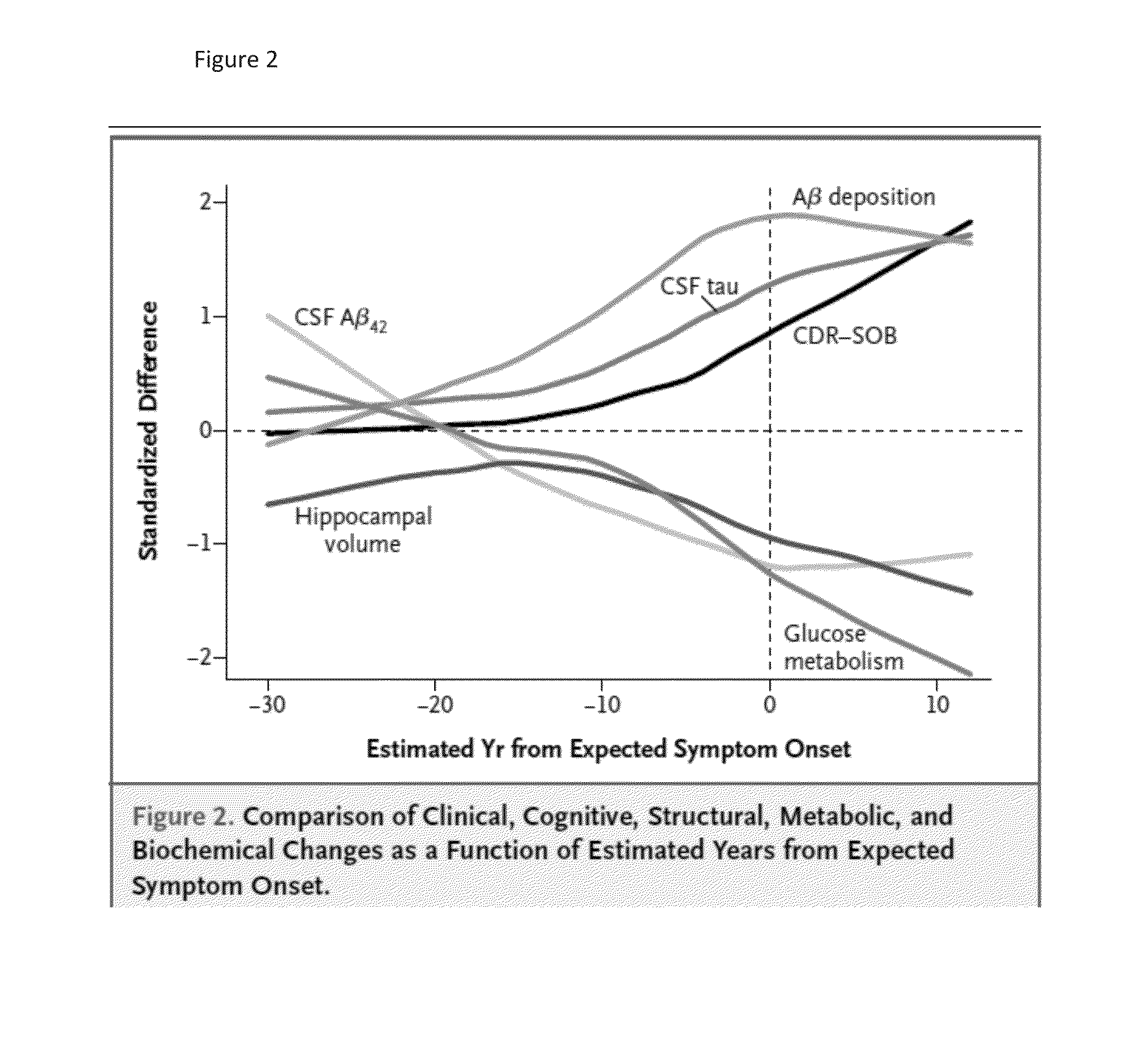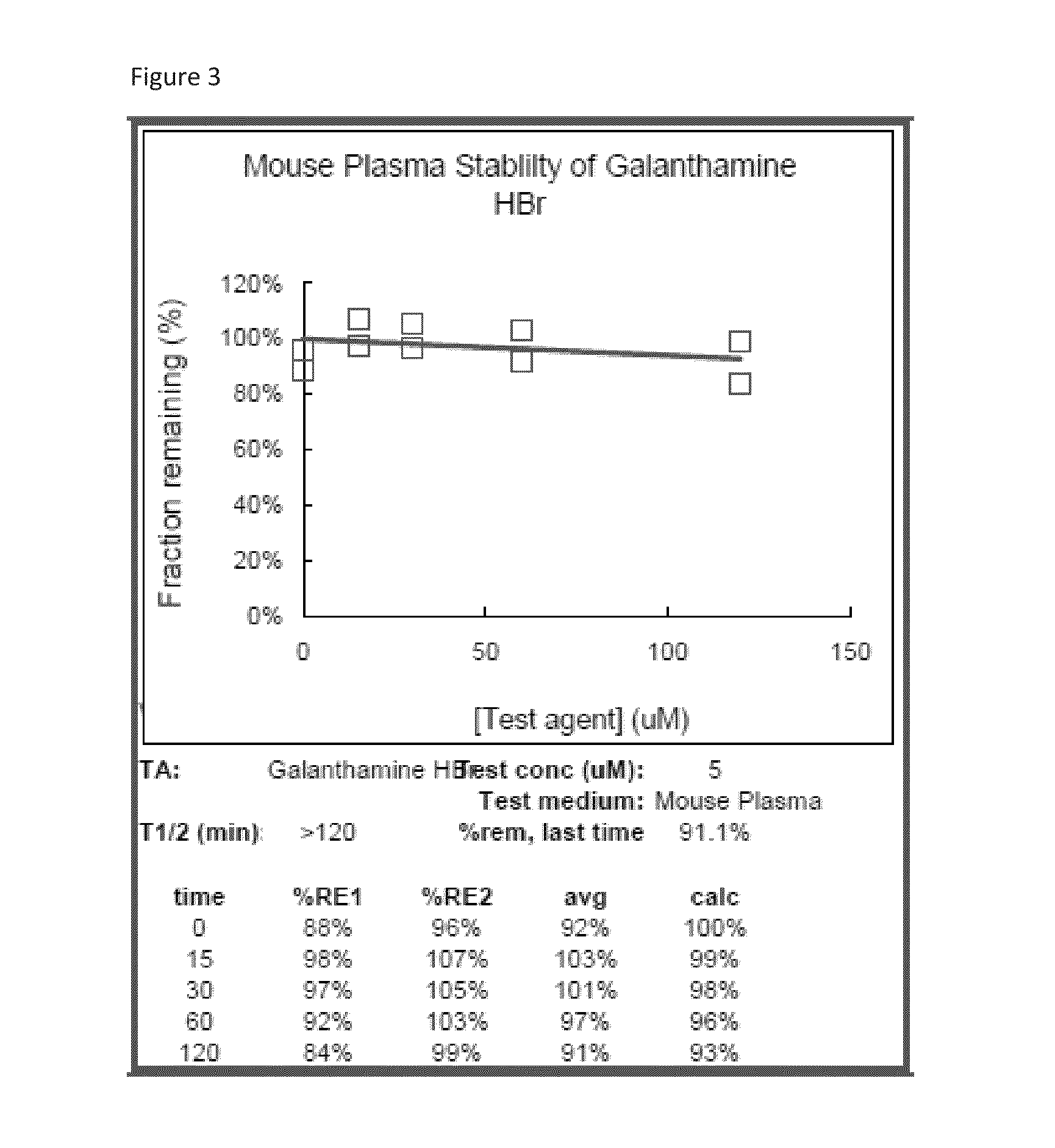Clearance of amyloid beta
- Summary
- Abstract
- Description
- Claims
- Application Information
AI Technical Summary
Benefits of technology
Problems solved by technology
Method used
Image
Examples
third embodiment
[0114]Treatment according to the invention may involve volumetric MRI scanning or determination of fluorodeoxyglucose uptake by PET scanning, as noted by Sperling et al., op cit 2011.
sixth embodiment
[0115]Treatment according to the invention involves administration of nicotine agonists such as EVP 6124, DMXB-A, AZD 1446, ABT 894, or others mentioned above together with one of (4aS,6R,8aS)-5,6,9,10,11,12-hexahydro-3-methoxy-11-methyl-4aH-[1]benzofuro[3a,3,2-ef][2]benzazepin-6-ol's analogs as specified above. The agonists assist in clearance of Aβ from plaque and so establishment of useful levels where required is by beginning low and increasing the dose until a response is seen in PET scanning for amyloid, or CSF Aβ consisting of a slower progression of abnormality. The combination of a (4aS,6R,8aS)-5,6,9,10,11,12-hexahydro-3-methoxy-11-methyl-4aH-[1]benzofuro[3a,3,2-ef][2]benzazepin-6-ol analog and a nicotinic agonist may cause cardiac side effects and extreme caution should be used with this combination. Typically the daily dose of (4aS,6R,8aS)-5,6,9,10,11,12-hexahydro-3-methoxy-11-methyl-4aH-[1]benzofuro[3a,3,2-ef][2]benzazepin-6-ol analog and agonists will be will be 0.1 to ...
PUM
| Property | Measurement | Unit |
|---|---|---|
| Fraction | aaaaa | aaaaa |
| Time | aaaaa | aaaaa |
| Molar density | aaaaa | aaaaa |
Abstract
Description
Claims
Application Information
 Login to View More
Login to View More - R&D
- Intellectual Property
- Life Sciences
- Materials
- Tech Scout
- Unparalleled Data Quality
- Higher Quality Content
- 60% Fewer Hallucinations
Browse by: Latest US Patents, China's latest patents, Technical Efficacy Thesaurus, Application Domain, Technology Topic, Popular Technical Reports.
© 2025 PatSnap. All rights reserved.Legal|Privacy policy|Modern Slavery Act Transparency Statement|Sitemap|About US| Contact US: help@patsnap.com



